BlogRSS
“Fashion Forward, Three Centuries of Fashion” at Musée des Arts Decoratifs
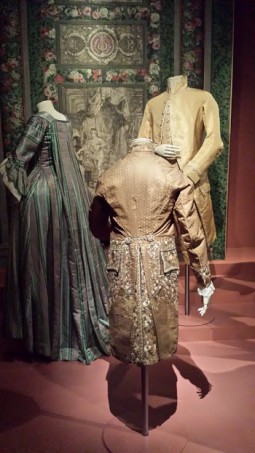
Musée des Arts Décoratifs in Paris celebrates the 30th anniversary of its fashion collection displaying three hundred years of fashion in its new exhibition, on show through the 14th August 2016.
Vitaldi Babani
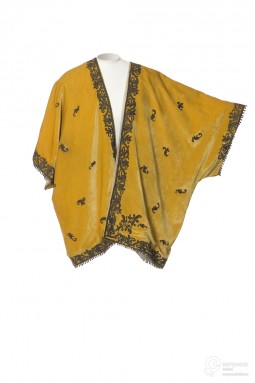
During April, Europeana Fashion will explore the history of couture, dedicating each week to a different less-known couturier. The first issue focuses on Vitaldi Babani, a textile importer turned into a designer, whose robe japonaise became a must for every fashionable woman in Paris.
Stephen Jones and the art of Millinery

Born in 1957 in Cheshire, Stephen Jones studied at Saint Martin’s School of Art where he was the sole male student in his year.
In 1979 he left the punk scene to embrace the New Romantic movement when he became a regular attendee of London’s Blitz nightclub in Covent Garden. As one of the “Blitz Kids” he used to meet Spandau Ballet, Duran Duran, Isabella Blow and Jean Paul Gultier. Also he shared a house with Boy George and Grayson Perry. Many of the Blitz Kids became his first clients and Jones created outlandish hats for them to wear to the club.
In the same year, Jones designed a line of hats for Fiorucci. The next year the Blitz’s owner Steve Strange decided to invest on his talent and made him open his first millinery salon, in Covent Garden. After this first success, in 1982, Jones had his debut at Paris fashion week and Princess Diana became a regular costumer. Also he started a lucky collaboration with Victoria & Albert Museum, which began with one hat commissioned for their newly refurbished Costume Court and culminated in 2009 with the Hats: An Anthology exhibition.
Through his career Jones has created hats for the catwalk shows of many leading couturiers and fashion designers, such as John Galliano at Dior and Vivienne Westwood. An ambitious style, his inventiveness and the high level of technical expertise with which he realises his ideas are the reason he is now considered one of the world’s most important milliners of the late 20th century.

Ensemble designed by Jean Paul Gaultier and hat by Stephen Jones, 1985. Courtesy of Les Arts Décoratifs, Paris
Search through Europeana Fashion Portal other fabulous Stephen Jones‘ creations.Barbie at Les Arts Décoratifs

Protagonist of an exhibition in France for the first time, Barbie will be the guest star at Les Art Decoratifs in Paris from the 10th of March to the 18th of September.
Born Barbara Millicient Roberts, from Wisconsin, the famous doll was created by Ruth Handler, one of the Mattel’s founders, who wanted to replace her daughter’s (Barbara) paper doll with a three-dimentional doll, which had to be like a mannequin. Ruth was so determined to innovate the young girl’s entertainment, to convince an entire male working group to create Barbie. Since that moment her story has been written, overlooking her age, to let her identify with a teen ager as well as with a young girl.
Maybe nobody in the team in 1959 would have imagined the huge success Barbie would have acheived . Across the years, the famous doll has been a schoolgirl, a nurse or an hostess, and these are just three of more than 150 professional roles she played. She has been a veterinarian more than once, a paleontologist, a computer technician, a racer, a teacher, a doctor, a police-woman, for four times a candidate for Presidential elections and an astronaut in 1965, to celebrate the Armstrong’s moon landing. Barbie’s has an history of successes, marked by amazing outfits, from the strangest to the most glamourous, sometimes designed by big names of fashion. With her pop charm she has kept the attention of Andy Warhol too, who dedicated one of his iconic paintings to her.
The tradition of the “poupée de mode” has its origins in the 18th century, when this term referred to three different objects: the little girl’s doll, the miniature of the dress which had to be realized in real measures and the mannequin used in the boutiques. In that period the fashion industry was quite important in the French economic system and it played an essential role in culture. The dressed doll’s mission was to be sent all around the world to export French’s fashion trends. Queen Marie Antoinette herself used to send some dolls to her sisters to share with them the beauty of the fabrics made in Lyon.
The difference between the “poupée de mode” and Barbie is that the American doll has always been the only protagonist with a strong identity, while the French doll played just the role of mannequin to show and sell magnificent dresses around the world. Anyway both of them have been a marketing phenomena.No other toy until today has had such a strong influence in girl’s education: in fact, Barbie has inspired tastes and habits of many generations of girls since her launch on the market.
Discover amazing Barbie’s items from our archive on Europeana Fashion Portal
Exhibition “Haute-à-Porter” at Modemuseum Hasselt!

Fashion cross and mix the most distant worlds, taking inspirations and introducing in contemporary prêt-à-porter the craftsmanship, luxury and extravagance of the haute couture. Modemuseum Hasselt's new exhibition “Haute-à-Porter” focuses on this theme to explore the practices of the last 30 years of fashion.
From the collection: Melissa Shoes by Zaha Hadid
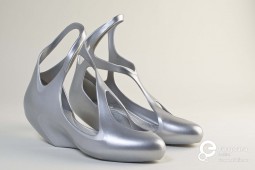
Great architect Dame Zaha Hadid recently disappeared leaving a vast heritage which goes beyond architecture and includes experimentation with accessory and footwear design.
From the collection: a Fauvist’s Design!
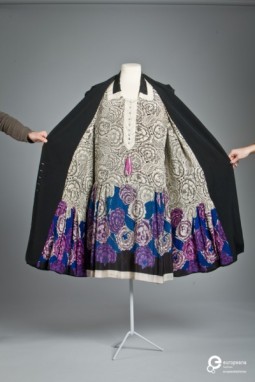
A dress and coat designed by Zimmermann and belonging to Modemuseum Hasselt's beautiful collection, are an amazing example of the way art and fashion contaminate their worlds.
“HAIR! In Fashion and Art” at Centraal Museum

Human hair is a quite wide subject in fashion and art, which has never been the subject of a comprehensive research. Centraal Museum focused on the theme in its new exhibition, “HAIR! Human Hair in Fashion and Art”!
“Game Changers. Reinventing the 20th Century Silhouette”
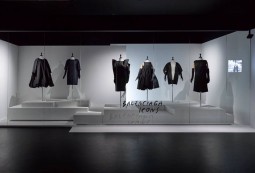
MoMu celebrates the fashion innovators with its new exhibition, “Game Changers. Reinventing the 20th Century Silhouette”!
A Cena da Krizia

A group of friends remembers Krizia with an intellectual dinner at the famed Spazio Krizia in Manin street, Milano.






